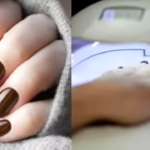
In a landmark regulatory decision, the European Union has officially banned the use of trimethylbenzoyl diphenylphosphine oxide (TPO) in gel nail polishes, effective from September 1, 2025. TPO, a commonly used photoinitiator in UV-cured cosmetic products, has been linked in animal studies to fertility concerns, prompting regulators to act decisively in the interest of consumer health. The ban affects all 27 EU member states and several affiliated countries, requiring manufacturers and salons to remove TPO-based products from shelves and replace them with safer alternatives.
The decision reflects a broader trend within the EU to tighten chemical regulations in personal care products, ensuring that consumers are protected from potentially harmful substances. According to the European Chemicals Agency (ECHA), the ban was implemented after reviewing scientific studies that indicated reproductive toxicity in animal models, raising concerns about long-term human exposure, particularly for professionals such as nail technicians who experience frequent contact with these chemicals.
For cosmetic manufacturers, the TPO ban poses significant operational and financial challenges. Companies that have long relied on TPO for its efficient UV-curing properties must now reformulate gel polishes without compromising quality, consistency, and curing speed. Research and development teams are being tasked with identifying alternative photoinitiators that meet regulatory requirements, maintain product performance, and comply with EU safety standards. Several industry insiders predict a short-term increase in production costs due to testing, reformulation, and compliance processes, though the ban is expected to encourage innovation in safer UV-curing technologies.
Salons and distributors are also affected. Many small and medium-sized businesses must phase out existing inventory, potentially leading to financial strain if alternatives are not readily available. Training for nail technicians on new formulations will be essential to ensure product efficacy and client satisfaction.
Consumer safety advocates have largely welcomed the EU’s move, describing it as a proactive measure that aligns with international trends in chemical regulation and public health. The ban also highlights the EU’s precautionary approach, where the potential risks of a substance are addressed even in the absence of definitive human studies, demonstrating a commitment to preventive regulation.
Market analysts believe the ban could influence global cosmetic standards. International companies exporting gel nail polishes to the EU will need to comply with these regulations, potentially prompting wider adoption of TPO-free formulations in other regions such as North America and Asia. Moreover, the initiative could set a precedent for stricter regulation of other photoinitiators or cosmetic chemicals with emerging safety concerns.
In conclusion, the EU’s prohibition of TPO in gel nail polishes represents both a regulatory challenge and an opportunity for innovation. Manufacturers, distributors, and salons must adapt to maintain compliance and product quality, while consumers benefit from enhanced safety. This decision underscores the growing importance of chemical safety and sustainability within the cosmetics industry.
